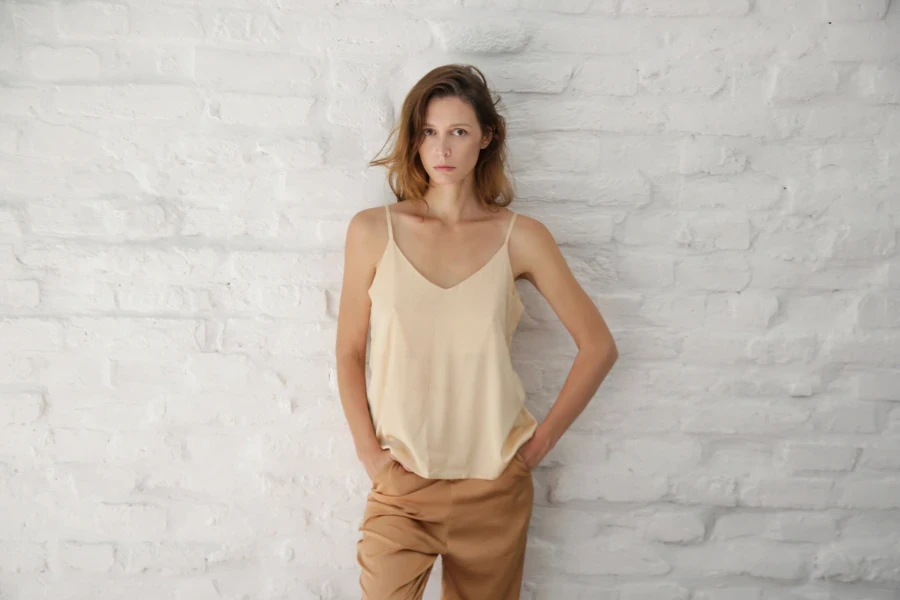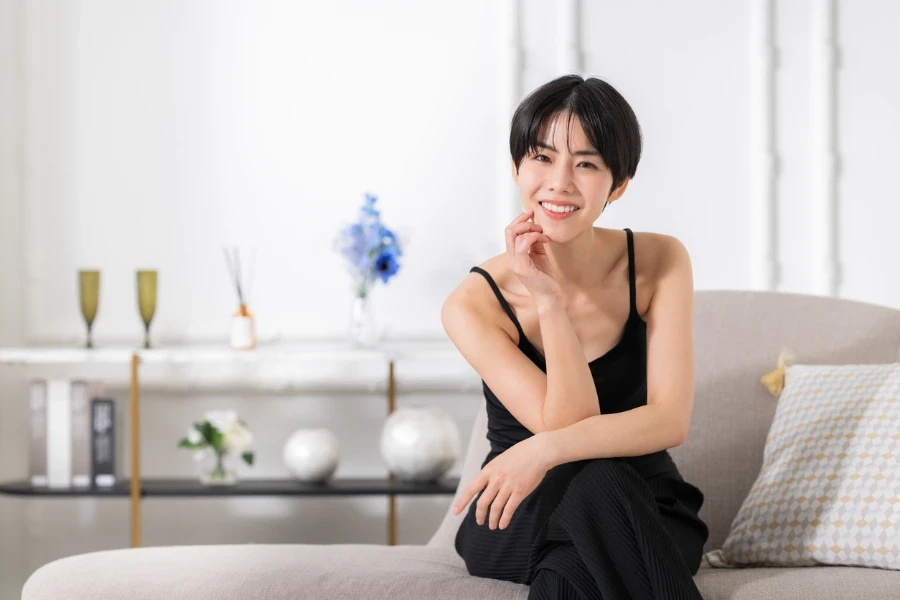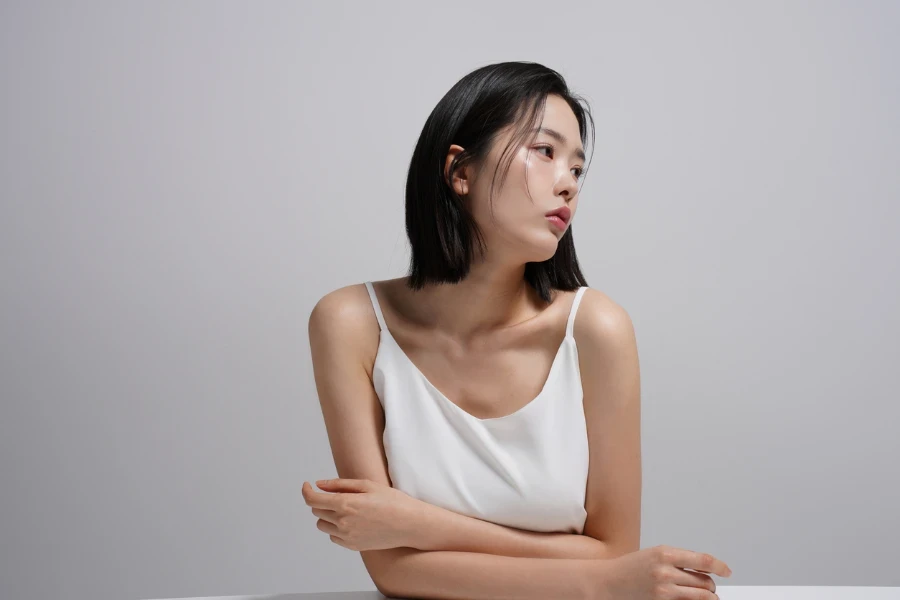Camisoles, once considered a basic undergarment, have evolved into a versatile wardrobe staple. From casual wear to elegant layering pieces, camisoles are now a fashion must-have. This article delves into the global demand for camisoles, key players in the market, and regional market insights.
Table of Contents:
– Market Overview
– Emerging Trends in Camisoles
– Consumer Preferences and Buying Behavior
– Sustainability in Camisole Production
– Conclusion
Market Overview

Global Demand for Camisoles
The global demand for camisoles has seen a significant rise in recent years. According to Research and Markets, the global women’s lingerie market, which includes camisoles, grew from USD 59.07 billion in 2023 to USD 62.52 billion in 2024. This market is expected to continue growing at a CAGR of 6.17%, reaching USD 89.85 billion by 2030. The increasing preference for comfortable yet stylish lingerie has been a key driver of this growth. Camisoles, with their dual functionality as both innerwear and outerwear, have become a popular choice among consumers.
Key Players in the Camisole Market
Several key players dominate the camisole market, each bringing unique offerings to the table. Victoria’s Secret, a well-known name in the lingerie industry, has expanded its market presence by launching a dedicated lingerie range on its Indian website. This move introduces a wide array of camisoles and other lingerie products to the Indian market, catering to the growing demand for quality and branded intimate wear.
Triumph International, another major player, has solidified its presence in the Indian market by opening a new franchise store in Hyderabad. This store offers more than 150 styles in innerwear and loungewear, including camisoles, catering to a diverse consumer base.
Mumbai-based startup Bold & Bae Fashion has also made significant strides in the market. By introducing a premium collection that spans lingerie, loungewear, beachwear, casualwear, and athleisure, Bold & Bae Fashion targets a demographic of modern, bold women aged 14 to over 44. Their direct-to-consumer (D2C) approach leverages contemporary digital platforms to extend their reach, ensuring a seamless and secure shopping experience.
Regional Market Insights
The camisole market exhibits varied trends across different regions. In North America, the United States and Canada represent significant markets characterized by high consumer spending on lingerie products. North American consumers prioritize brand loyalty, with a significant emphasis on sustainability and ethical manufacturing processes. There is a high demand for size inclusivity and body positivity, with brands that cater to a wide range of body types gaining market share.
In Europe, countries are at the forefront of embracing eco-conscious lingerie, with a strong demand for organic and recycled materials. Consumers in this region are well-informed and place a premium on sustainability. The Middle East market, on the other hand, is characterized by luxury spending, with consumers favoring high-end, designer lingerie. There is a rising interest in modest yet fashionable lingerie options.
The Asia Pacific region, encompassing China, Japan, and India, is experiencing substantial growth in the women’s lingerie market. This growth is fueled by increasing disposable incomes, a burgeoning middle class, and a growing emphasis on personal well-being. The online retail sector has become a significant channel for purchasing lingerie, driven by convenience and the availability of multiple products.
Emerging Trends in Camisoles

Popular Fabrics and Materials
The choice of fabrics and materials in camisole production has seen a significant shift towards natural and sustainable options. According to the Design Capsule for Girls Sweet Soiree S/S 25, natural fibre blends such as linen, Tencel, Himalayan nettle, and hemp are becoming increasingly popular. These materials not only offer a lustrous and structured drape but also align with the growing consumer demand for eco-friendly products. The use of these natural fibres is perfect for creating a natural take on occasionwear, providing both comfort and style.
Additionally, the incorporation of printed bobbinet cotton tulle frills and ruffles adds a touch of elegance and sophistication to camisoles. The trend towards using mixed natural fibre detachable corsages further enhances the versatility and aesthetic appeal of these garments. The emphasis on natural materials is not just a fleeting trend but a reflection of a broader movement towards sustainability in the fashion industry.
Innovative Designs and Styles
Innovative designs and styles are at the forefront of the camisole market. The pleated camisole, highlighted in the Design Capsule for Girls Sweet Soiree S/S 25, is a prime example of this trend. This woven camisole features a roomy bodice with an empire-line seam and knife-pleat detail for maximum volume, creating a look that leans towards the Boho blouse. The addition of adjustable shoulder ties allows for growth and customization, making it a practical yet stylish choice for consumers.
Another emerging style is the cropped culotte, which pairs perfectly with camisoles for a chic summer look. Designed with a deep waistband and pleated front, these wide-leg trousers offer both comfort and fashion-forward appeal. The use of high-lustre linen, Tencel, Himalayan nettle, and hemp blends ensures that these garments are not only stylish but also sustainable.
Consumer Preferences and Buying Behavior

Comfort and Versatility
Comfort and versatility are key factors driving consumer preferences in the camisole market. Consumers are increasingly seeking garments that can be worn in multiple settings, from casual daywear to more formal occasions. The Design Capsule for Girls Sweet Soiree S/S 25 highlights the importance of designing camisoles with adjustable features, such as shoulder ties, to enhance comfort and adaptability.
The trend towards interchangeable #LuxeLounge pieces, as reported by Curve New York S/S 25, further underscores the demand for versatile clothing. Consumers are looking for relaxed items like boyfriend shirts and wide-leg trousers that can be styled from day to night, offering both comfort and functionality.
Seasonal Trends and Preferences
Seasonal trends play a significant role in shaping consumer preferences for camisoles. During the summer months, lightweight and breathable fabrics such as linen and Tencel are highly sought after. The Design Capsule for Girls Sweet Soiree S/S 25 suggests pairing camisoles with wide-leg culottes for a stylish summer vacation look.
In contrast, the winter season sees a shift towards warmer materials and layering options. The inclusion of cardigans in occasionwear assortments, as mentioned in the Design Capsule for Girls Sweet Soiree S/S 25, provides a practical solution for cooler weather while maintaining a #PrettyFeminine aesthetic.
Price Sensitivity and Value Perception
Price sensitivity and value perception are critical considerations for consumers when purchasing camisoles. While there is a growing demand for high-quality, sustainable materials, consumers are also mindful of the cost. Brands need to strike a balance between offering premium products and maintaining affordability.
According to the Design Capsule for Girls Sweet Soiree S/S 25, designing for longevity, disassembly, and recycling can enhance the value perception of camisoles. By creating garments that are durable and sustainable, brands can justify higher price points and appeal to environmentally conscious consumers.
Sustainability in Camisole Production

Eco-friendly Materials and Practices
Sustainability is a major focus in the camisole market, with brands increasingly adopting eco-friendly materials and practices. The use of natural fibre blends such as linen, Tencel, Himalayan nettle, and hemp, as highlighted in the Design Capsule for Girls Sweet Soiree S/S 25, is a testament to this trend. These materials not only offer environmental benefits but also provide a luxurious feel and aesthetic appeal.
Additionally, the emphasis on designing for longevity, disassembly, and recycling aligns with the principles of circular fashion. By creating garments that can be easily disassembled and recycled, brands can reduce waste and promote a more sustainable fashion industry.
Brands Leading the Sustainability Movement
Several brands are leading the sustainability movement in the camisole market. For instance, the Design Capsule for Girls Sweet Soiree S/S 25 mentions brands like Miss Bluemarine, UPA, Maeko Tessuti, and Monnalisa, which are incorporating sustainable practices into their production processes. These brands are setting an example for the industry by prioritizing eco-friendly materials and innovative design techniques.
Conclusion
In conclusion, the camisole market is experiencing significant growth and transformation, driven by emerging trends in fabrics, designs, and consumer preferences. The shift towards sustainable materials and practices is a major focus, with brands increasingly adopting eco-friendly options to meet the growing demand for sustainable fashion. The influence of social media and celebrity endorsements continues to shape consumer preferences, while the emphasis on comfort and versatility remains a key factor in driving demand. As the





 বাংলা
বাংলা Nederlands
Nederlands English
English Français
Français Deutsch
Deutsch हिन्दी
हिन्दी Bahasa Indonesia
Bahasa Indonesia Italiano
Italiano 日本語
日本語 한국어
한국어 Bahasa Melayu
Bahasa Melayu മലയാളം
മലയാളം پښتو
پښتو فارسی
فارسی Polski
Polski Português
Português Русский
Русский Español
Español Kiswahili
Kiswahili ไทย
ไทย Türkçe
Türkçe اردو
اردو Tiếng Việt
Tiếng Việt isiXhosa
isiXhosa Zulu
Zulu